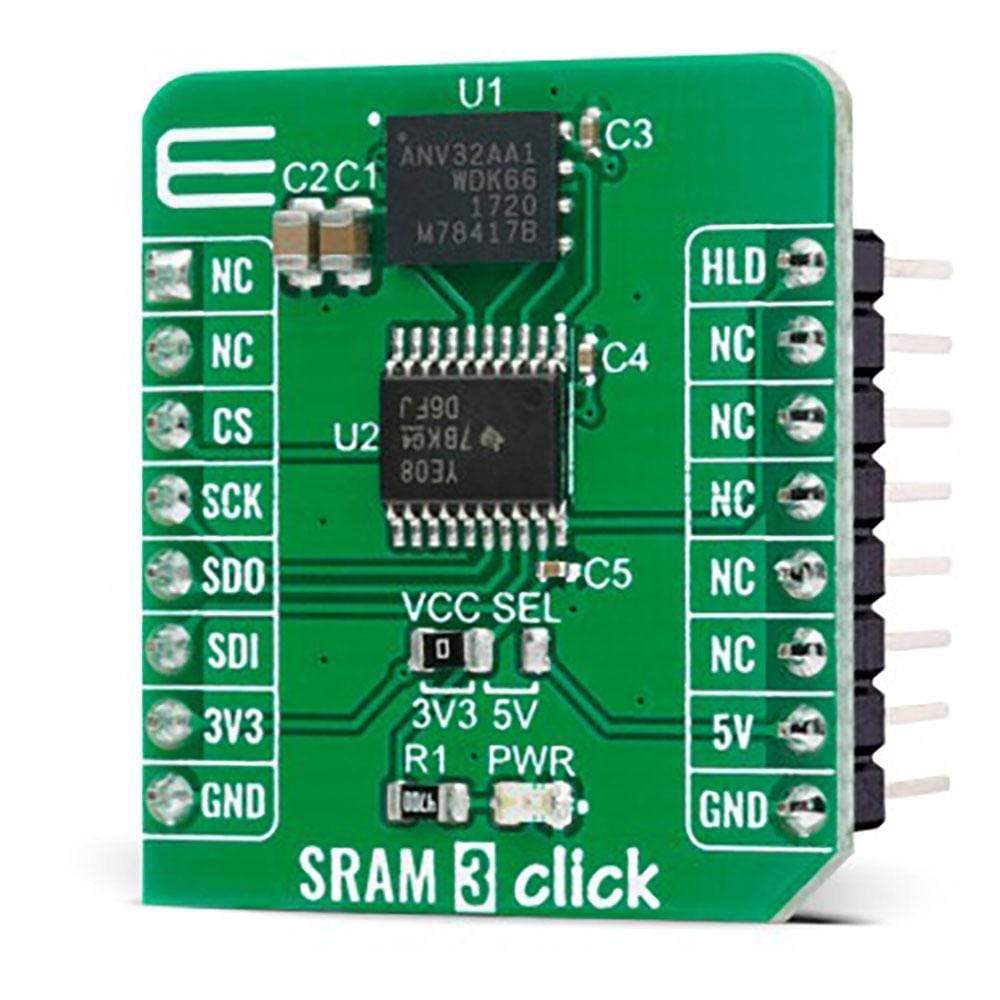
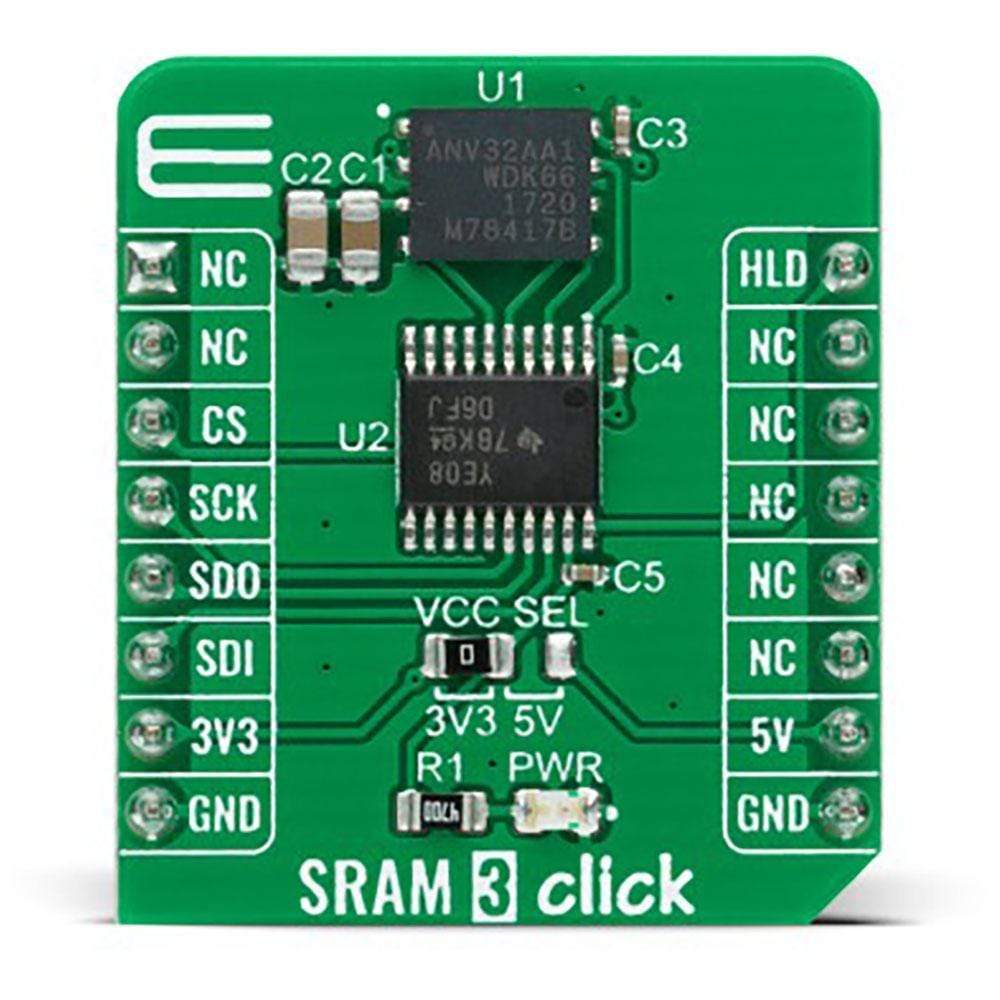
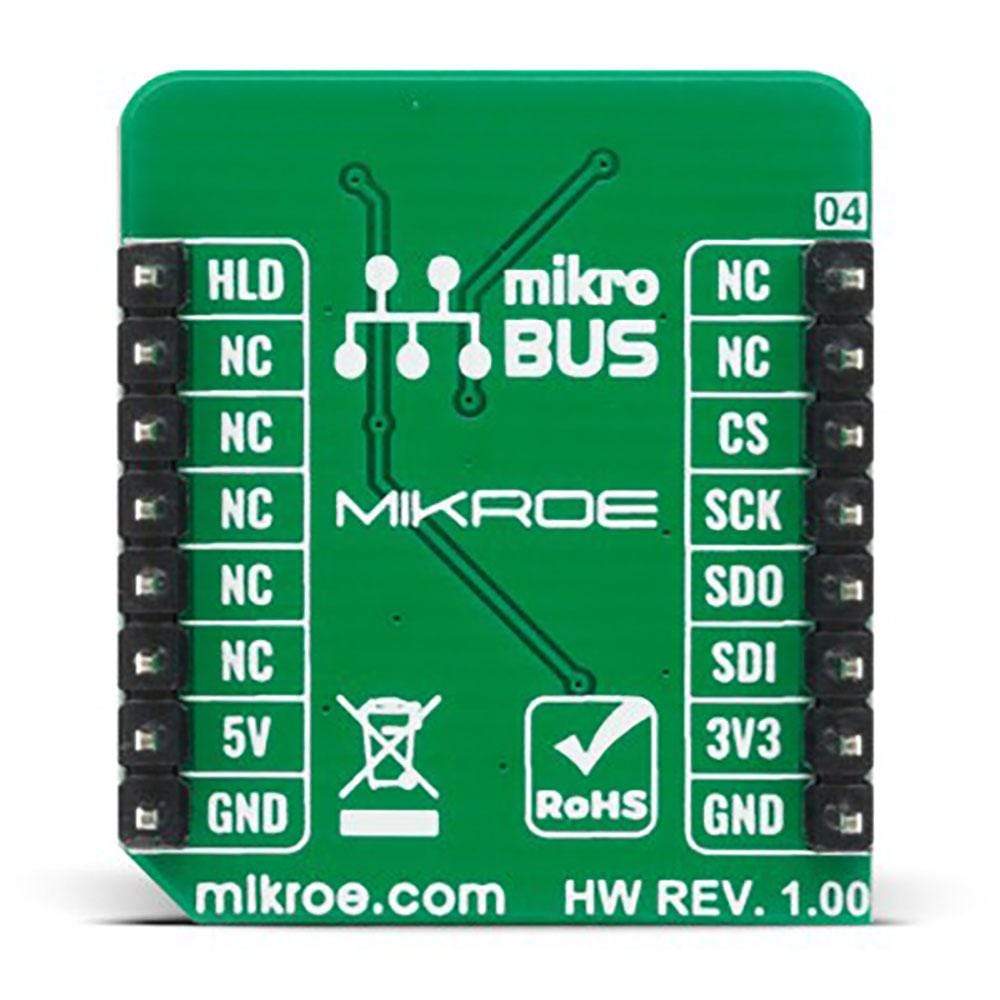
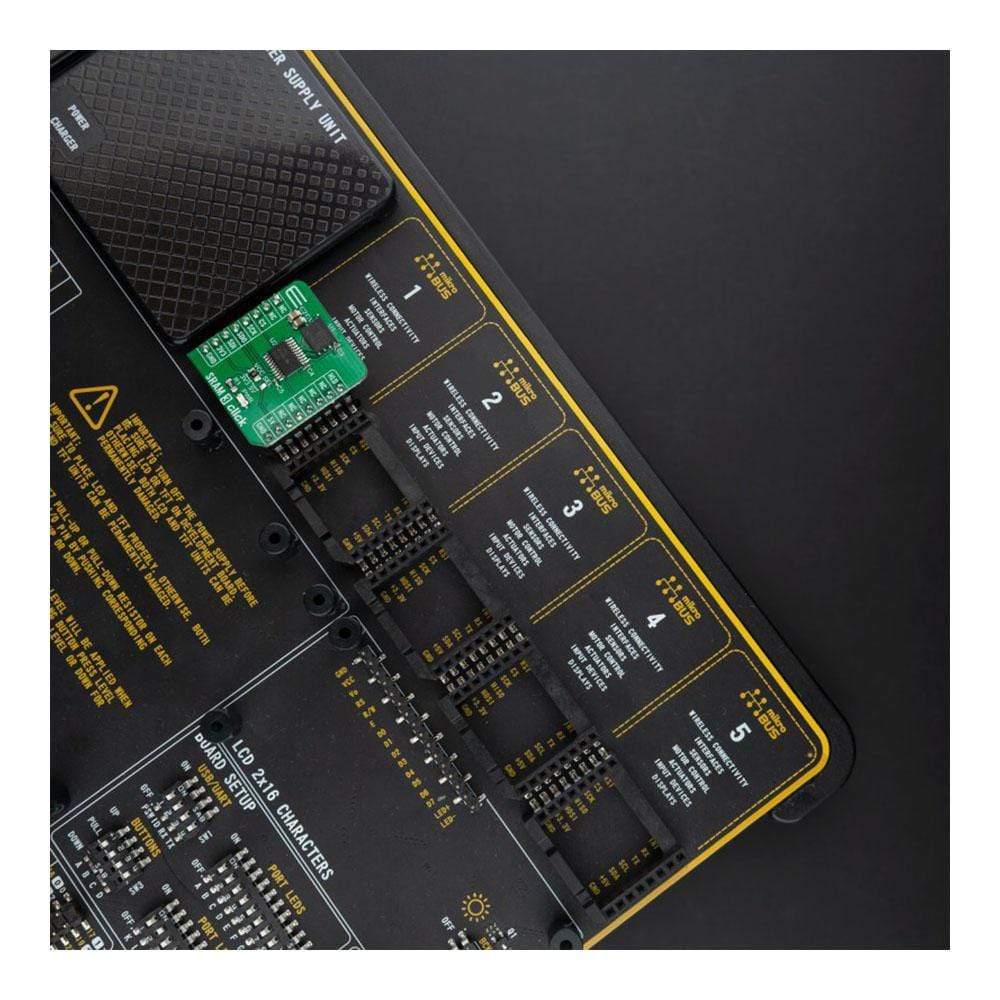
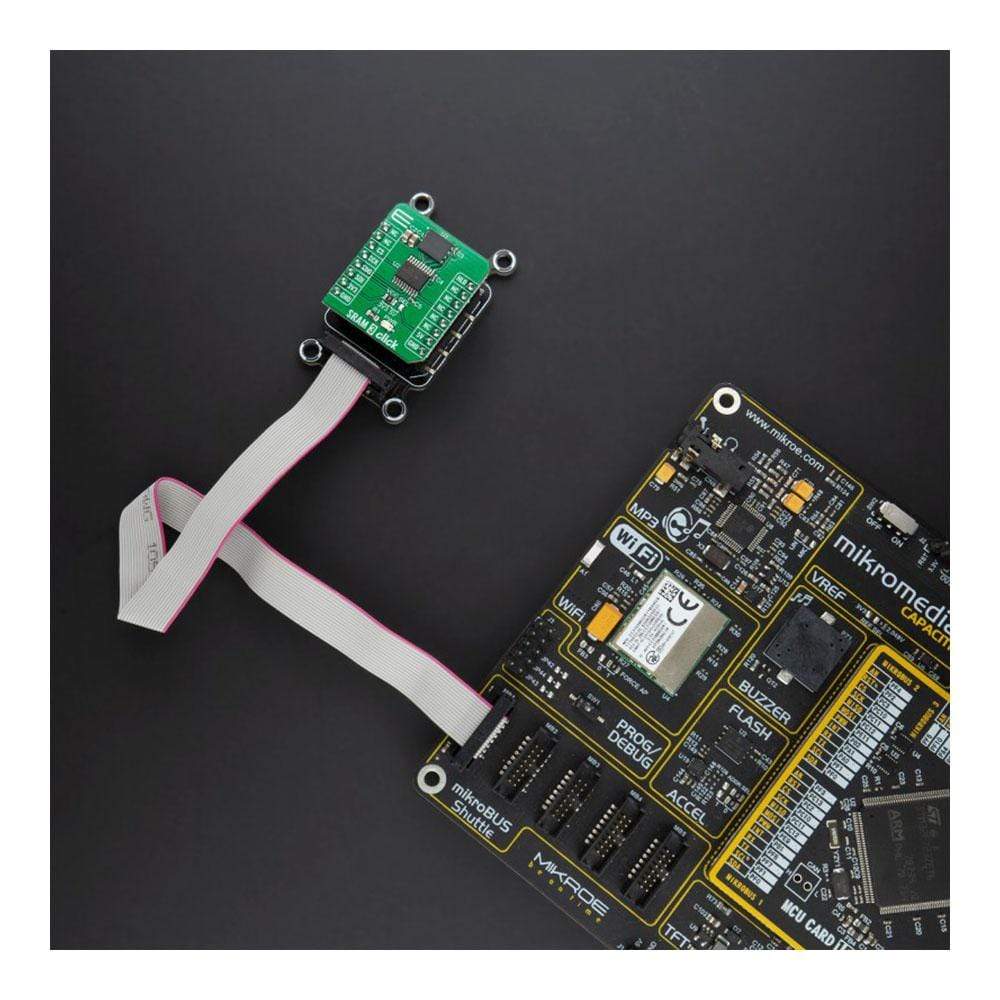
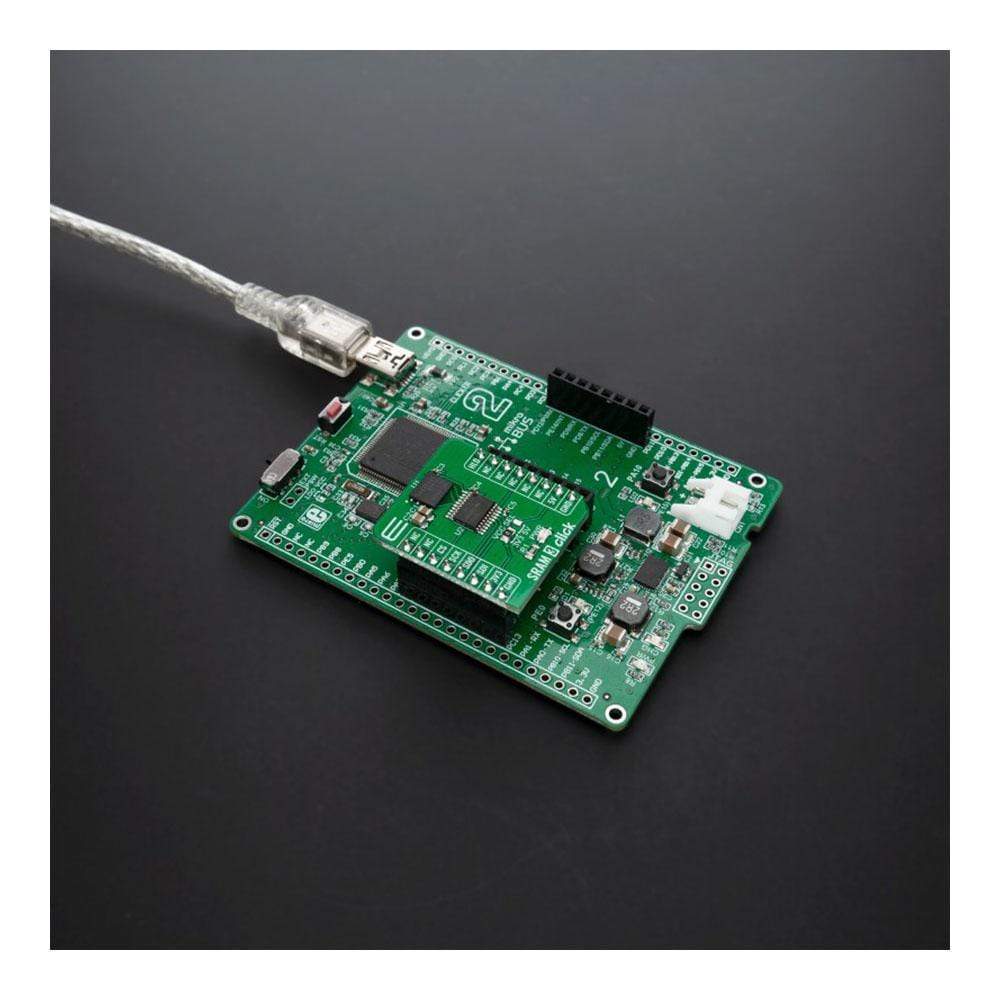
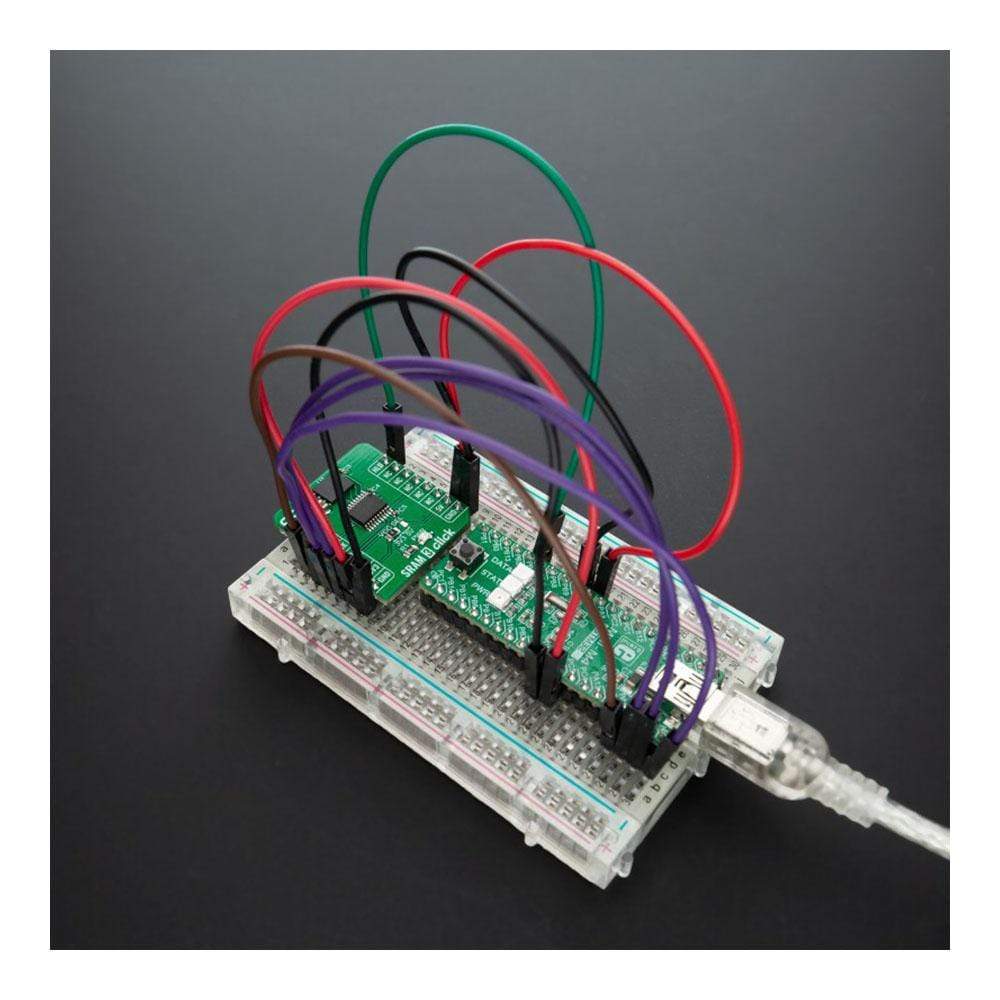
Overview
The SRAM 3 Click Board™ is a 1 Mb Serial Random Access Memory add-on board with the non-volatile SONOS storage element included with each memory cell, organized as 128k words of 8 bits each. This board features the ANV32AA1WDK66 an SRAM memory from Anvo-System Dresden. The device is accessed by a high-speed SPI-compatible bus. The serial SRAM provides fast access & cycle times, ease of use and unlimited read & write endurance of a standard SRAM. With dedicated safety features like supporting high data accuracy and all other features makes SRAM 3 Click excellent choice to store drive profiles, configurations and similar data, which are typically stored in a FLASH.
The SRAM 3 Click Board™ is supported by a mikroSDK compliant library, which includes functions that simplify software development. This Click Board™ comes as a fully tested product, ready to be used on a system equipped with the mikroBUS™ socket.
Downloads
La SRAM 3 Click Board™ est une carte complémentaire de mémoire à accès aléatoire série de 1 Mo avec l'élément de stockage SONOS non volatil inclus avec chaque cellule de mémoire, organisé en 128 000 mots de 8 bits chacun. Cette carte comprend l'ANV32AA1WDK66, une mémoire SRAM d'Anvo-System Dresden. L'appareil est accessible via un bus compatible SPI à grande vitesse. La SRAM série offre des temps d'accès et de cycle rapides, une facilité d'utilisation et une endurance de lecture et d'écriture illimitée d'une SRAM standard. Avec des fonctions de sécurité dédiées telles que la prise en charge d'une précision élevée des données et toutes les autres fonctionnalités, la SRAM 3 Click est un excellent choix pour stocker les profils de lecteur, les configurations et les données similaires, qui sont généralement stockées dans une mémoire FLASH.
La carte SRAM 3 Click Board™ est compatible avec une bibliothèque compatible mikroSDK, qui comprend des fonctions qui simplifient le développement logiciel. Cette carte Click Board™ est un produit entièrement testé, prêt à être utilisé sur un système équipé du socket mikroBUS™.
| General Information | |
|---|---|
Part Number (SKU) |
MIKROE-4293
|
Manufacturer |
|
| Physical and Mechanical | |
Weight |
0.017 kg
|
| Other | |
Country of Origin |
|
HS Code Customs Tariff code
|
|
EAN |
8606027380709
|
Warranty |
|
Frequently Asked Questions
Have a Question?
Be the first to ask a question about this.







